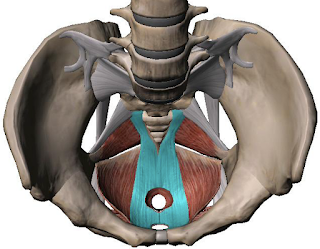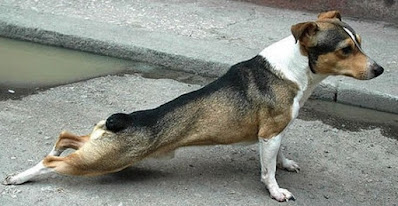Continuing with the initial question "Why is healing painful?"
The previously mentioned illnesses and injuries have external causes. Occurrences that leave marks on the body (such as scrapes, burns, bruises, and the like) or can be easily observed as a change in a person's behavior (such as acute toxic/pathogenic invasions or prolonged exposure to extreme weather).
Far less apparent is when a person has come to a "healing crisis" due to gradual and long-term damage.
Causes of a healing crisis are physical, mental, emotional, or spiritual.
A combination of these is most likely.
On the physical level this is the build-up of residues from mild or moderately inflammatory foods and the consumption of drugs,* physical patterns that are not habitually balanced, and a regular intake of environmental toxicity.
Regarding consumption of inflammatory foods and drugs over a long period, the natural healing industry recognizes disorders generated in this way as "long-term inflammation" conditions. Included are type 2 diabetes, gout, obesity and related disorders, etc.
Concerning unbalanced physical patterns, a common diagnosis given is "over use injury." This is when a person does the same movement or assumes the same posture over such a long period of time that it creates a neuromuscular excess within that kinetic chain. Another related diagnosis is "muscular imbalance." This is given when a person repeatedly uses incorrect physical mechanics to do common tasks. Both of these habits become problematic when the person does not then balance the entire musculoskeletal system and actively pattern correct mechanics.
The regular intake of environmental toxicity may or may not be avoidable. As one might deduce, this is a regular exposure over time to toxic particles in air, water and food. It's worth noting that sound and light pollution can also congest the sense organs over time.
The most common symptom for long-term physical problems is pain. This could be joint/muscle pain, digestive discomfort, head/body aches, general listlessness, etc. To most people these are completely hidden from an outside viewer, unless an observer is trained to notice pain expressions such as a grimace or limp. Friends and family will notice diminished physical energy, make note that recovery from common illnesses takes longer, and that seasonal concerns get progressively worse over time.
If we regularly analyze and overhaul our habits we can actively change the physical catalysts for long-term inflammation. Some methods are: consume more nutrient and fiber-rich foods than highly processed junk foods (80:20 ratio is a good starting place); habituate daily activities that support physical balance; improve the quality and quantity of drinking water; and remove all unnecessary chemicals from home and work environments.
Changing physical influences will produce a cleansing effect. Although a proactive choice to adjust habits will have a positive effect it is important to not overlook the discomfort of change. When the body is changing its fuel source, even from a poor one to a nutrient rich one, there will be symptoms commonly associated with detoxification. Re-patterning movement will generate soreness in new areas and is very likely to flare up old areas of pain. Organs that have been filtering toxicity will go through a cleansing process once the damaging substance is gone.
Some comfort can be had in knowing that it will take half or less the amount of time to cleanse the body than it did to create the imbalance.
Emotional, mental and spiritual habits need to be recognized and healed for full recovery.
Within the Chinese Medicine system an "internal pernicious influence" is an emotional, mental or spiritual imbalance that a person has allowed for a long time. This is not widely recognized in a scientific model of health, even though a study of brain scans has shown that thinking about an extremely emotional event triggers physiological change within the brain centers. (This is unfortunate because if developmental traumas were recognized in Western Medicine then treatments for them would be more available.)
In my time as a shiatsu practitioner, I've seen that
- anything that happens on one level of our being is happening on others,
- unless there is a specific event that produced an injury, disorders begin on subtle levels,
- when the person in the body takes control of the healing process the prognosis is very good.
The documentary Heal, by Kelly Noonan Gores, 2017, validated my observations. In it she highlighted researcher Kelly A. Turner, PhD. whose best-selling book Radical Remission: Surviving Cancer Against All Odds, expands on the top 9 factors people have used to completely heal from stage 4 cancer:
The reason I use this specific piece of research is because conventional (scientific) medicine stumbles on cancer. It is seen as congenital and thus unavoidable, an unexplainable auto-immune disorder, and in some cases a result of allopathic protocols, but has not been traced to a non-physical cause within the individual. At least not by "Western Medicine."
Taking control of our own health implies that we stop outsourcing it. Notice that diet, herbs and supplementation are part of the program, but much more of the emphasis is on emotional, mental and spiritual health. Number two, "Taking control of your health," is probably the most challenging mental leap for many people. This will require deep questioning, personal research and a higher level of learning than what is required to acquire an illness.
The placebo/nocebo effects provide valuable information about the power of belief.
The placebo effect is when a subject takes a sugar pill believing it is a medication and subsequently experiences alleviated symptoms as if they had taken the actual medication.
The nocebo effect is when a subject takes a sugar pill believing it is the medication and subsequently experiences negative side effects associated with the actual medication. It is also experienced when a subject is informed of the potential negative effects of a medication that they are prescribed to take. (This second instance is observed in every-day, non-clinical study medical practice.)
Placebo/nocebo effects occur in the "control" group of a study. Meaning, physiological symptoms occur with absolutely no chemical catalyst, rather by the power of suggestion. I see this phenomena as clear evidence that the emotional, mental and spiritual aspects are major components in health. As seen in Dr. Turner's research, these factors can be the most important element to complete health recovery.
Why is healing painful? Because there is no pill to alleviate guilt, shame or resentment.
Each person who truly wants to heal will need to embrace emotional/mental/spiritual imbalances that underly their health problems and take action to change their effects. This necessitates a full-scale personal re-evaluation, real honesty about goals, values and beliefs, acknowledgement of personal responsibility, asking for and giving forgiveness, and a long-term commitment to change.
If it's sounding like a spiritual re-birth then you are following my meaning. The physical process (perhaps 6 to 9 months long) is a mere blip in the scope of rediscovering spirituality, healing life-long emotional wounds, cultivating genuine self-love and creating healthy social connections.
The pain of healing long-term illness is cleansed through tears. Emotional and mental breakthroughs and surrendering to the vast, unified mystery of life is the mountain that must be climbed. Reclaiming Personal Power is the summit. This is not likely to be covered by any insurance plan offered in the US.
One thing our culture has created is the Support Group. This is recognition that inner-being health is initially damaged in relationship (with others and/or with self), and thus requires relationship to find a path to wholeness.
In nature-based traditions a ceremony or ritual done with an abundance of community support would initiate this sort of healing. In current society we have representatives of these traditions in the form of psychotherapists, mediums, bodyworkers, hypnotherapists, vision quest guides and spiritual counselors. Some practitioners specialize in transformational healing sessions intended to open the whole being to its true nature. I believe that psychedelic-assisted therapies are answering the need to heal from repressed trauma.
The bottom line is that no one heals from long-term disease alone. There will be feelings of vulnerability, groundlessness, humility, sorrow and remorse. And there will also be a flood of positive influences, moral support, success stories and encouragement. Everyone who has succeeded in "saving their own life" will tell you it only feels alone while you are staring at your own navel. When you look up you will see how many people are in the same boat.
We cannot solve a problem using the same thinking we used to create it. This statement is attributed to Albert Einstein, but he most certainly was not the first person to realize it.
From the bottom of my heart I wish you abundant health and joy!
Christian
* "consumption of drugs" refers to: non-nutritional plant, food or beverage items. These include recreational drugs that can be eaten, smoked or injected, empty calorie foods such as sugary drinks, candy, highly processed meals, and alcoholic beverages. Synthetic drugs, including over-the-counter and prescription medications, are well-known to be sources of inflammation when consumed for multiple years.
.jpeg)








